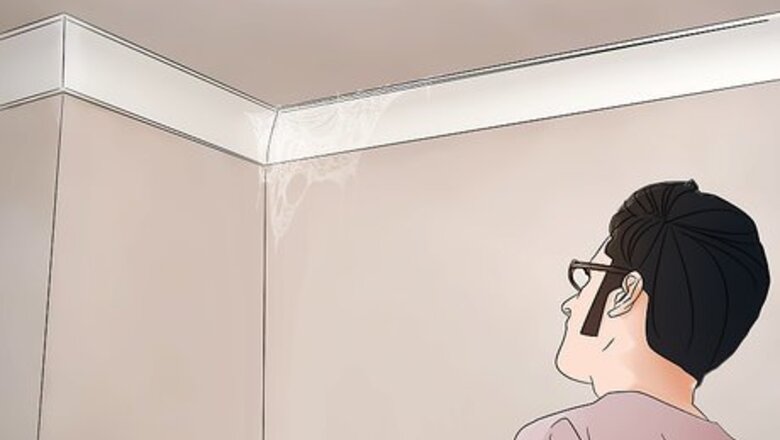
views
Removing Webs with Household Supplies
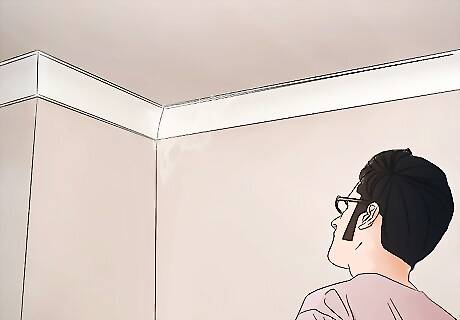
Watch for webs during your daily cleaning. Spider webs should be removed as you see them. This can help spiders from infesting your home. As you move through your day-to-day cleaning, be on the lookout for webs. Make a note of any webs you see to clean later on.

Remove webs using a vacuum. The best means to remove spider webs is by simply using a vacuum. A handheld vacuum would be easiest to maneuver. However, if you don't have a handheld vacuum you can also use a vacuum with an extension nozzle. Simply use the nozzle or handheld vacuum to suck up any webs you see. If webs are stuck in, you may have to go over the area quite a few times. If you notice any cobwebs on furniture or curtains, vacuum over them. Then, use a lint roller to remove any leftover bits of web. Be sure to check under furniture. Some types of spiders may make webs in dark areas. Once a week, flip over your couches, chairs, tables, and other items of furniture to check for webs. If you notice any webs, vacuum them up.
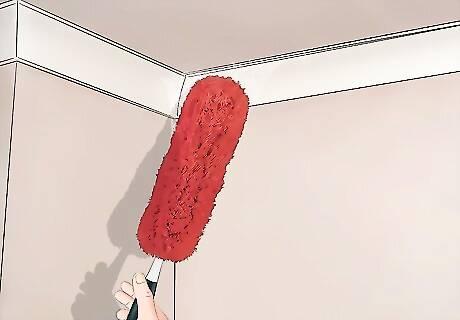
Use a soft duster with a handle for hard-to-reach places. Some places may be difficult to reach with a vacuum cleaner. Any nooks or crannies you cannot reach with a vacuum can be cleaned using a soft duster with a handle. If you don't have one, use a rubber band to secure an old sock to the end of a yard stick or ruler. You can then use this tool to remove webs.
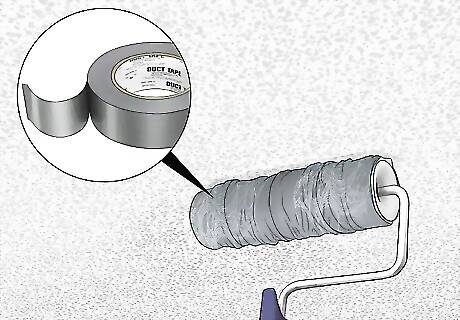
Use duct tape and a paint roller on speckled ceilings. Speckled ceilings, also known as popcorn ceilings, can be difficult to clean. Spider webs on these kinds of ceilings can be frustrating to remove. Using duct tape can be a good trick. Take a regular paint roller and wrap duct tape around it, with the sticky side of the tape facing outward. Then, roll this over your speckled ceiling in order to remove cobwebs. It may take a few rolls to get the webs out completely.
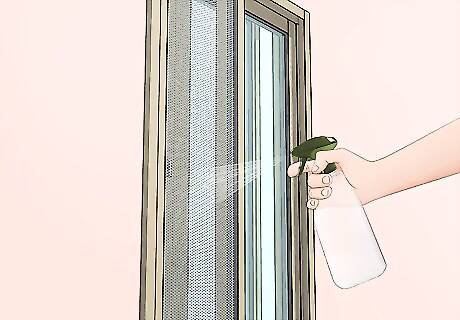
Spray down windows and window screens. Spiders often make webs in the corners of windows, settling between the screen and window. If you want to remove spider webs from these places, follow guidelines often used for cleaning older windows. Spray down the window and screen with water. You can use either a hose or a spray bottle. If you're spraying from outside, a garden hose with a spray nozzle attached can be sprayed onto the window. You can spray into the screen, aiming at the unwanted spider webs. If you're spraying inside, just use a standard spray bottle. Remove the screen and use a smaller spray bottle to dislodge any remaining spider webs. From there, clean the windows with your chosen cleaning supplies. You can use window sprays you would buy at a local department store or simply use soap and water. Clean the window thoroughly, making sure to remove any remaining residue from the spider webs. To prevent reoccurrence, replace screens that have cracks and tears in them. This will stop spiders from getting into your home to begin with.

Double check hard-to-reach spots of your home for webs and egg sacs. Go over the nooks and crannies in your home. Double check for spider webs or infestations in these places. If you live in an area where poisonous spiders are a hazard, you want to make sure your home is free of webs. The best way of preventing spider infestations is catching them before they start.
Using Bleach
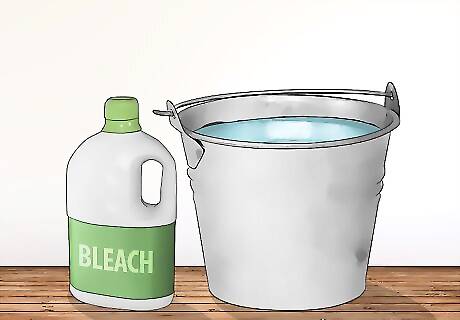
Prepare a mixture of bleach and water. You can also use a combination of bleach and water to address spider webs. This is best used for live webs rather than cobwebs. This will get rid of spider eggs and kill any spiders still living in them. You can buy bleach at a local department store or online. Make sure to read any instructions provided before use. Always dilute bleach with water to the levels recommended on the container. For most homes, one gallon of bleach is all you'll need. If you're spraying bleach outside, you'll need to purchase some kind of bleach sprayer. You can do so online or at a local department store. You also may need a garden hose or adjustable spray nozzle. If you're bleaching in your home, a big sprayer might have too much force. You can simply mix bleach and water in a small handheld spray bottle. Make sure to wear protective gloves when handling bleach. It can be corrosive to skin. Always mix bleach with lukewarm or cold water, not hot water, which can cause the release of harmful chlorine gas. Never mix bleach with other household chemicals.
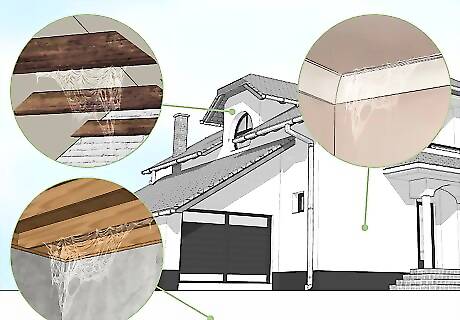
Survey your home for webs. Before you begin the process, survey your home for webs. This will help you determine where you need to spray or wash. When spraying outside, you should spray in 10 to 15 square foot sections. Look for areas that contain spider webs and decide how to break your home into sections. Watch out for things like exterior light fixtures or electronic components of your house. You should make sure you don't damage such areas of your home with bleach. You can try to manually remove spiders with a cleaning brush if you notice webs in such areas.
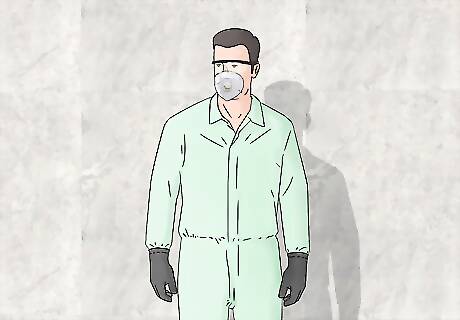
Put on protective gear. As bleach can be harmful to skin and eyes, you'll need to put on protective gear before you begin spraying. You should have protective clothing, goggles, and gloves.

Spray the webs. Pump the sprayer towards areas infected by spider webs. Your sprayer's settings should allow you to spray bleach somewhere between a solid stream and a gentle mist. You might want to test the sprayer on sidewalk or cement before using it on your home. Apply a generous amount of bleach water to any areas you notice that contain eggs or webs. As you notice the webs and sacks loosening, spray another layer of bleach and water. If webs are stuck on hard, use a cleaning brush to manually remove them. Use essential oils for a natural spider repellent. "I've always hated using harsh chemicals around my home, especially with little kids and pets running around. After reading this article, I decided to try making my own natural spider repellent with essential oils instead of store-bought sprays. I mixed up a simple spray with tea tree and neem oil and started applying it around potential entry points. I'm happy to say it really seems to be working great so far without exposing my family to toxins." - Donna G. Dislodge tricky webs with a clever tool. "I had a big spider web problem high up on the exterior of my house that I just couldn't reach, even with a ladder. This article gave me a great tip to use an old sock duct taped to a broom handle to safely scrape them away. It allowed me to easily dislodge all the webs from my high second-story walls without any chemicals or risk of falling off a ladder. Sometimes, the simplest solutions are the best!" - Sandra A. Wash away stubborn spider eggs with bleach. "I had an ongoing issue with spider eggs that kept reappearing in my garage no matter how often I removed their webs. After reading this article, I tried using a diluted bleach spray, which finally got rid of the eggs for good. But be very careful using bleach indoors — make sure the area is well-ventilated because the fumes can be really harsh. Overall, though, it worked wonders on my spider egg problem." - Carolyn S. Seal entry points to keep spiders out. "I started noticing venomous spiders like black widows coming into my home way too often. Reading this gave me the idea to thoroughly seal any potential entry points they could squeeze through. Taking the time to seal up cracks and gaps has really reduced the number of spiders getting inside. I feel so much better knowing my home is safer, especially with young children around." - Beverly H. Have a story our readers should hear? Share it with 1 billion+ annual wikiHow users. Tell us your story here.
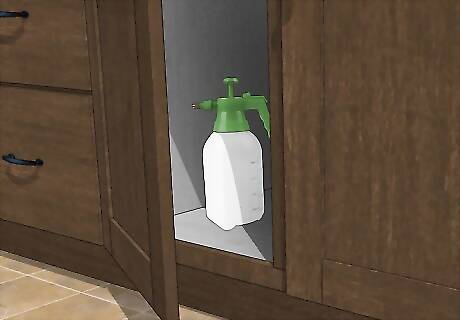
Store leftover bleach safely. Once you've sprayed down any webs you found in your home, store the leftover bleach safely. Keep it in a secure container away from children and animals. Manufacturer's instructions should provide details on how to store or dispose of bleach safely.
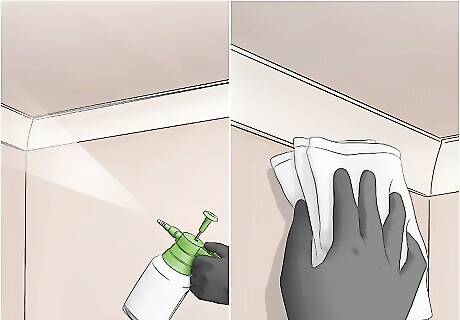
Spray bleach inside. When cleaning with bleach in your home, make sure to let the bleach sit for a minute after spraying it on a web or infested area. Then, wipe the web or egg sacs away with a towel and spray on another layer of bleach. It's best to let the bleach air dry after applying it rather than recontaminating the area with a towel. Keep children and pets away from areas in your home that you bleached recently. If you feel dizzy, open the windows to provide ventilation.
Preventing a Reoccurrence
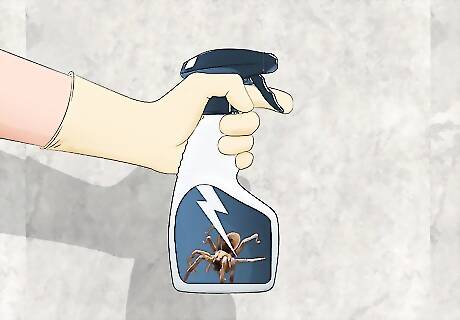
Try sprays. If you have a spider infestation in your home, basic spider killer sprays can be purchased to treat the infection. These are usually used outside the home. You spray the perimeters of your home, as well as any cracks or crevices spiders may use to enter your house. Choose a spray at a local department store. You should know the basic build of your home before going in so you know what sprays are safe for your house. Go around the perimeter of your home. Spray around the house's foundation. Also, look for potential entryways for spiders. Pay special attention to cracks in windowsills and garage entryways. Specifics regarding safe use depend on the type of spray you're using. The bottle or package should provide safety instructions. Always read these carefully before using any spider sprays.
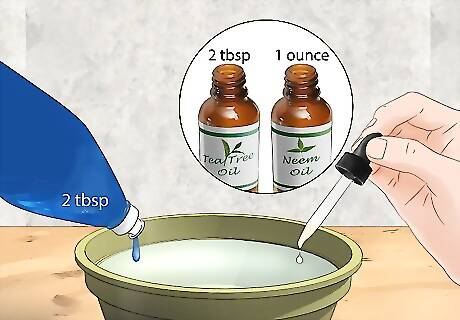
Use essential oils. If you're wary about using chemicals around your home, essential oils can help. Try creating a mixture using essential oils and see if you notice a difference. Spiders tend to dislike the taste of essential oils. You can purchase essential oils online or at a local health store. For best effect, use neem oil and tea tree oil. Mix about two tablespoons of dish soap into warm water. Then, add 5 drops of tea tree oil and an ounce of neem oil. Sprinkle this mixture around your home in areas where you've noticed spiders. Be careful, however. Make sure you do not leave the spray close to children or pets. Tea tree oil can be harmful if swallowed.
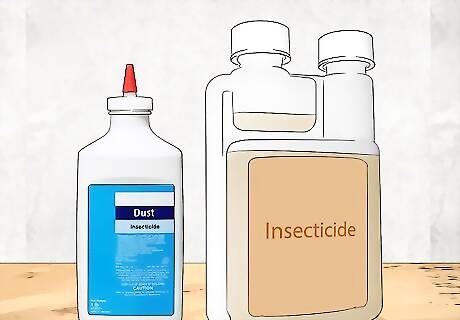
Look into insecticides. There are a variety of insecticides you can use to ward off spiders. Stop by your local hardware store and review your options. Dust insecticides are best used if you're treating cracks and crevices. They can be easily applied to hard-to-reach places in your home. Powder insecticides work best for spot treatment. If you've only seen spiders in a few spots in your home, consider a powder insecticide. If you're trying to create a boundary around your home, look into a liquid insecticide. They are usually mixed with water and then used to cover large areas around the home. As always, make sure to carefully review safety instructions of any products you buy prior to use.

Try out an electronic repellant. Many people feel more comfortable with electronic repellants as they don't involve spraying your home. Electronic repellents generate electromagnetic waves that repel spiders and other pests. You can find them online or at a hardware store. Read product reviews carefully before making a purchase, however, to make sure the repellent works for most people.
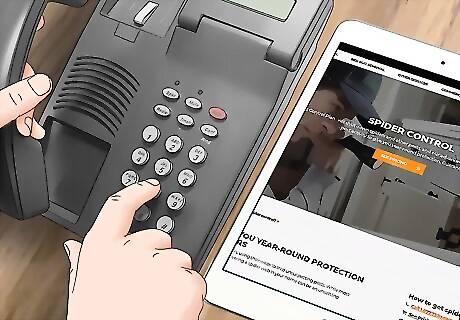
Get professional help, if necessary. If you have a serious spider infestation, you may not be able to treat it on your own. In this case, you should hire a professional exterminator. You should be especially proactive about this if you live in an area where poisonous spiders are common.



















Comments
0 comment